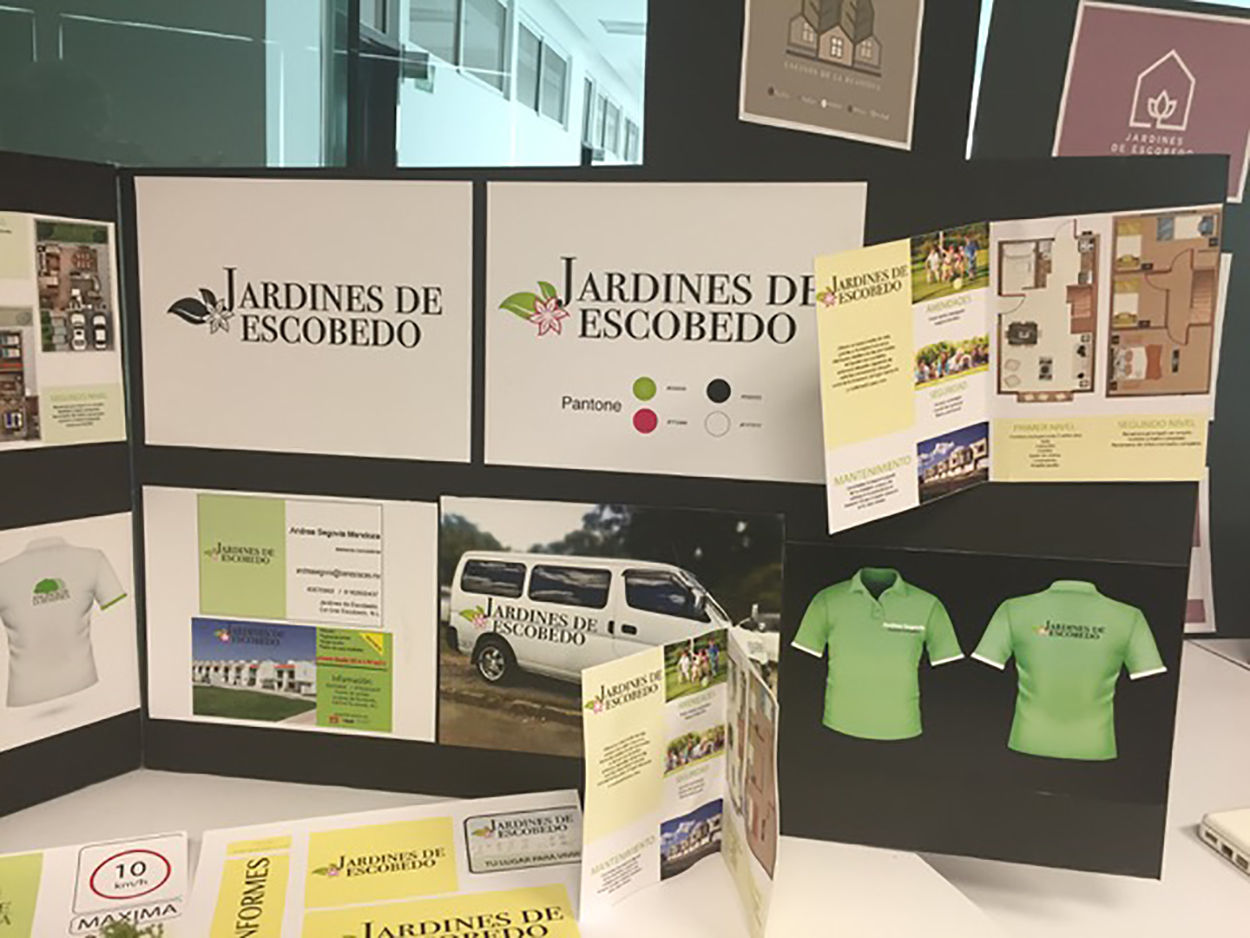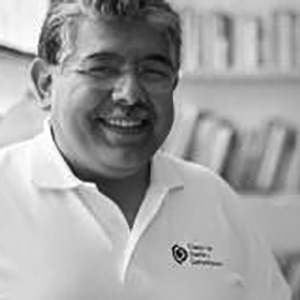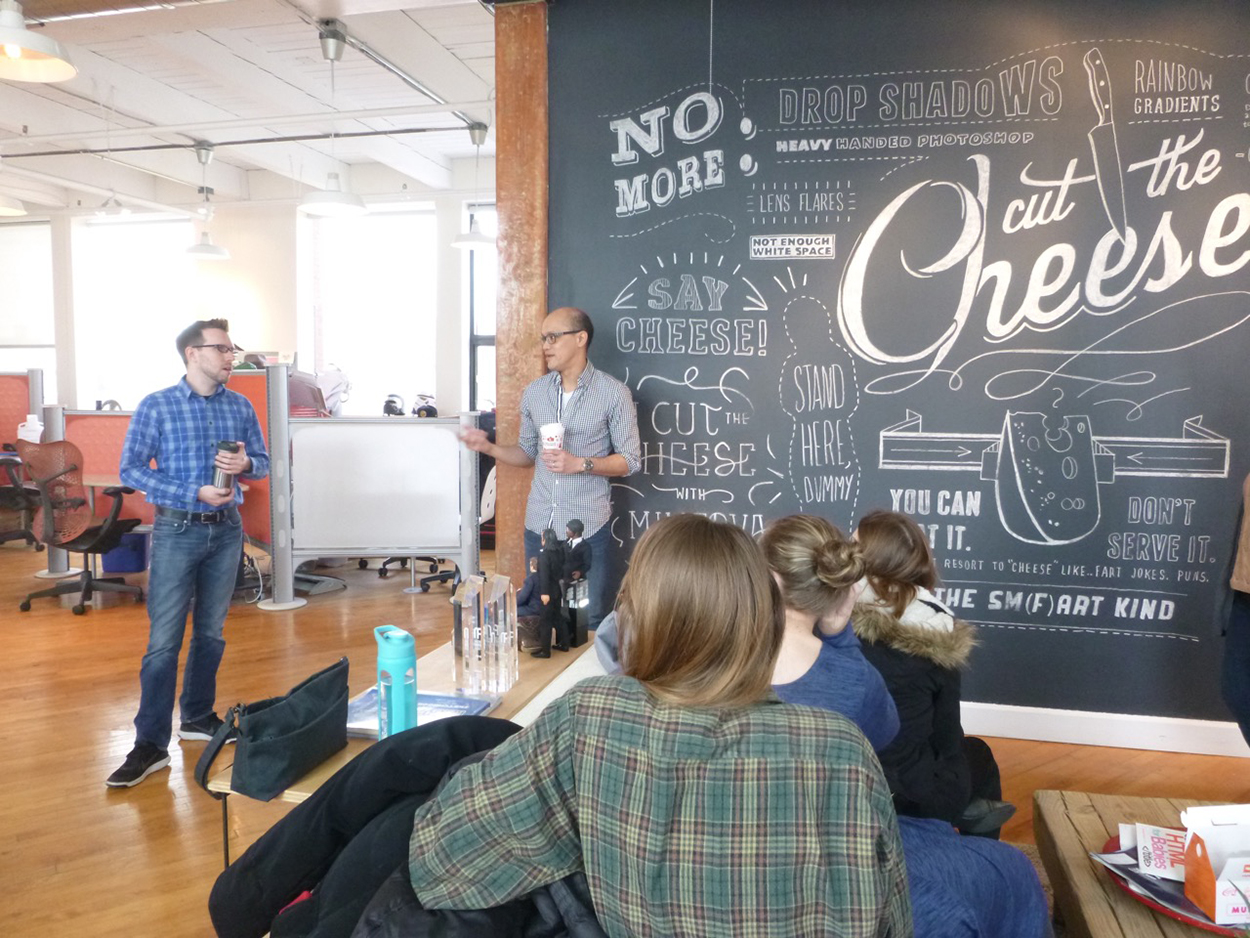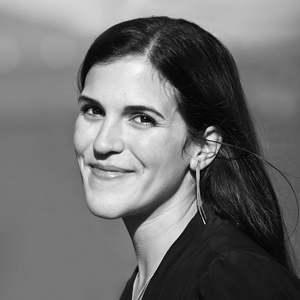Many institutions require faculty to utilize finals week in some way—but most project-based design courses don’t conclude in a final exam. Design faculty across the globe are finding creative ways to utilize their penultimate class meeting. In talking with a variety of design educators teaching on different continents, we present you with some variations on the typical (and, let’s face it, often anti-climactic) “final critique.” Please share your own finals week approach in the comments—we’d love to start a dialogue about this with other design educators!

We run a studio approach to teaching game development where we simulate a production house and issue briefs for students to execute in a short period of time. At the end of each trimester, students do a post-mortem/reflection on their performance during the term. They deliver it as a presentation and we film them.
One thing I also really enjoy is having the students (including myself) give feedback to each other about one thing they do well, and one thing they could improve on. In an open trusting environment, there can be some really helpful advice offered and taken.
Before critical reflection though, we want delivery of the projects to be high stakes and to an authentic audience, so it is not just an online submission to the teacher. So students publish to audience-facing industry sites like itch.io or Google Play, and also exhibit at a gallery.
Two years ago I introduced a triannual gallery exhibition for some of the game projects. This is unusual for games, but it helpfully reframes games as a cultural practice for students and the general public, and may be the only time the students exhibit their game in a gallery. We use the same exhibition name to help facilitate brand comfort and exhibit right on 5pm in a gallery around the corner from many companies. So now industry folk drop in and check out the student work. This has proven valuable for both students and industry, and adds a ritualistic edge to the end of trimester experience.
The photo (below) is from the last exhibition, where Dr Brendan Keogh (black shirt) has just taken over running the exhibition event.
 Dr Christy Dena is the Southern Chair and Department Coordinator of Games at SAE Creative Media Institute, Brisbane, Australia. She runs her own production company, Universe Creation 101, where she is the writer, designer, and director of Apps, installations, live games, and board games.
Dr Christy Dena is the Southern Chair and Department Coordinator of Games at SAE Creative Media Institute, Brisbane, Australia. She runs her own production company, Universe Creation 101, where she is the writer, designer, and director of Apps, installations, live games, and board games.

The finals week activity in my classes aims to give the students a bit of experience with the professional design industry in our city. The final project presentations simulate a professional work presentation to a client.
Traditionally, in my city, when a designer makes a final presentation of his/her work, they’re presenting to all the directors and the CEO of the company, most of whom have little contact with the designer up until this point. The designers or design team usually only has contact with the advertising or marketing people during the course of the project.
The projects are graded at this time, but the feedback from the company director and myself is more appreciated by the students than the grade for the work.
After the presentations, I buy pizza for the group.
 Jesús H. Gaytán, PhD, holds a BFA in graphic design (UDEM´83), MBA (UR´86), MFA graphic design (UDEM´06), PhD (UVM´15). He is an independent designer oriented to Corporative Identity and Color Consultant (CMG since 2000). He has been an assistant professor since 1986, with Universidad TecMilenio, Universidad Autónoma de Nuevo León and Universidad Americana de Managua (Nicaragua).
Jesús H. Gaytán, PhD, holds a BFA in graphic design (UDEM´83), MBA (UR´86), MFA graphic design (UDEM´06), PhD (UVM´15). He is an independent designer oriented to Corporative Identity and Color Consultant (CMG since 2000). He has been an assistant professor since 1986, with Universidad TecMilenio, Universidad Autónoma de Nuevo León and Universidad Americana de Managua (Nicaragua).

For GIT 237: Web Content Design, I include both an exam and a project critique.
Two weeks before the end of the semester, students are presented with a timed design challenge. Students must brainstorm, sketch, mockup, and prototype a three page website, and these activities must occur during scheduled class meetings. Presentations and critiques then occur during the final two meetings of the class. Students must show their work, which can include handwritten brainstorms, sketches, Photoshop or Illustrator mockups, and prototypes using InvisionApp. These presentations give students the opportunity to show off their design thinking.
During Finals Week, I also administer a comprehensive final exam. After a critique, many students are relieved by the exam, and the exam also allows students to demonstrate their impressive design knowledge separately from their design skills.
 Christina Carrasquilla is a Lecturer in Graphic Information Technology at Arizona State University, the Co-Director of the Device & Usability Learning Lab and the Mentorship Chair for AIGA Arizona. Her areas of interest include cross-media design, web design, and web development.
Christina Carrasquilla is a Lecturer in Graphic Information Technology at Arizona State University, the Co-Director of the Device & Usability Learning Lab and the Mentorship Chair for AIGA Arizona. Her areas of interest include cross-media design, web design, and web development.

I used finals week last semester to take my students out of the academic studio and into some professional ones. Though I typically try to take my students on tours of professional design studios at some point during the semester, it just didn’t work out with our schedules last term. However, finals week emerged as a possibility for some of our potential hosts, so I decided to give it a shot.
Logistically, this worked out well because the finals week meetings for my classes were scheduled back-to-back. I was able to schedule one studio tour within each class’ final meeting. I extended the invitation for the students to come for one or both tours as their schedule allowed, with an option to join the group for lunch at a local restaurant between visits.
We toured Minerva Design, a small, full-service design studio located in Rochester’s up-and-coming Village Gate, a revived factory repurposed as a mixed-use urban shopping area and workspace. Principal Mike Minerva (pictured), who regularly teaches as an adjunct in our Graphic Design program, is more than happy to welcome students into his workspace and give them some straight-talk about his industry experience, with his employees alongside to chime in with their various perspectives. Their airy workspace appeals to students with its melange of exposed brick and modern materials, like a corrugated metal wall in their conference room, which doubles as a critique space. Because their work spans a large spectrum, from branding to UX design, students enjoy lobbing all manner of questions at the team.
After lunch in Village Gate, we crossed the street to meet RIT Graphic Design alumnus Peter Lazarski at Workinman, self-described as a “cross-platform casual and mobile game development studio.” This mid-size studio gave the group an interesting behind-the-scenes look at game design and development—a different take on the concept of user experience that they’d been exploring from different angles through the semester. After discussing the organizational structure, culture and workflows, Pete walked us through some projects and talked about the studio’s foray into “connected” objects that bring digital play into the physical realm.
And then they returned to campus, with raised eyebrows and opened minds.
 Kelly Murdoch-Kitt is an Assistant Professor in the Graphic Design program at Rochester Institute of Technology. She teaches and works primarily in the areas of interaction and user experience design. Her recent research explores methods, tools, and benefits of intercultural design collaborations. She is also investigating the impacts of integrating sustainability topics into design curricula.
Kelly Murdoch-Kitt is an Assistant Professor in the Graphic Design program at Rochester Institute of Technology. She teaches and works primarily in the areas of interaction and user experience design. Her recent research explores methods, tools, and benefits of intercultural design collaborations. She is also investigating the impacts of integrating sustainability topics into design curricula.